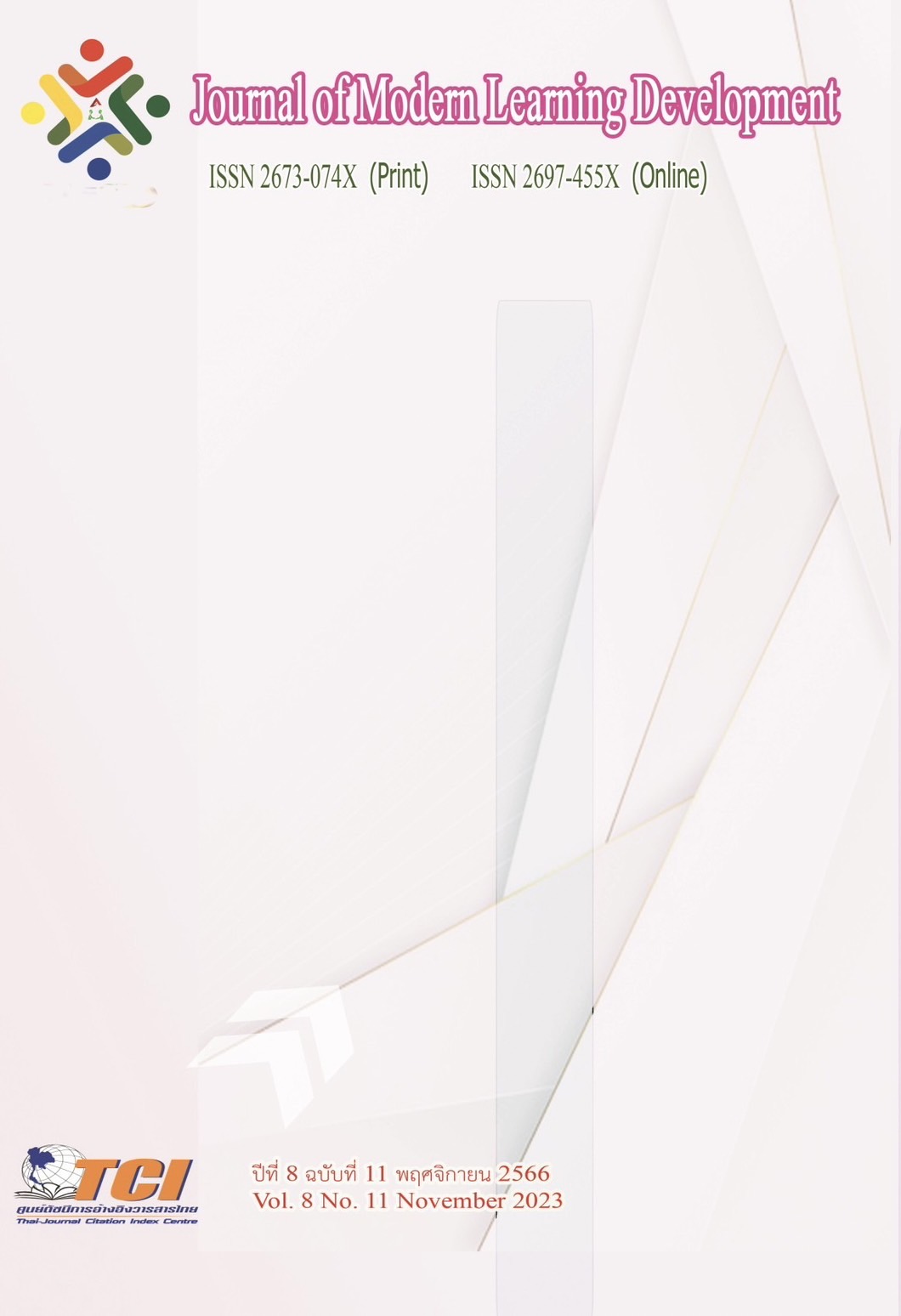A Development of the Four-Tier Misconceptions Diagnostic Test in Chemistry, Chemical Reactions for the Eleventh Grade Students
Main Article Content
Abstract
This research aimed to 1) to a develop the four-tier misconceptions diagnostic test in chemistry, chemical reactions for eleventh grade students; 2) to validate the quality of the test; and 3) to identify groups of concepts. The samples were 355 eleventh grade academic year 2022, students of the Secondary educational service area office phetchabun. The four-tier diagnostic test is multiple choice exam that contains answer tier , confidence in answer tier , reasons tier and confidence in reasons tier. which were validated in terms of content validity, difficulty, discrimination power, reliability and identify groups of concepts by the percentage of concept groups and the mean of the confidence level scores. It was found that 1) in the four-tier diagnostic test had 12 misconceptions, 30 questions. 2) the results of the quality of test had an index of item objective congruence (IOC) between 0.60-1.00. The answer step had a difficulty index between 0.35-0.77 and the reasoning step of the test between 0.23-0.73, with a discrimination index between ,the answer step between 0.23-0.69 and the reasoning step between 0.23-0.77, and the reliability by the Kuder-Richardson method (KR 20) ,the answer step had 0.80 and the reasoning step had 0.83. and 3) the results of identify groups of concepts in chemistry,chemical reactions for eleventh grade students, most students belong to misconceptions : The concept of the rate of chemical reactions.
Article Details
References
กระทรวงศึกษาธิการ. (2545). พระราชบัญญัติการศึกษาแห่งชาติ พ.ศ. 2542 และที่แก้ไข เพิ่มเติม
(ฉบับที่ 2) พ.ศ. 2545. องค์การรับส่งสินค้าและพัสดุภัณฑ์.
กระทรวงศึกษาธิการ. (2560). ตัวชี้วัดและสาระการเรียนรู้แกนกลาง กลุ่มสาระการเรียนรู้วิทยาศาสตร์
(ฉบับปรับปรุง พ.ศ. 2560) ตามหลักสูตรแกนกลางการศึกษาขั้นพื้นฐาน พุทธศักราช 2551.
กรุงเทพมหานคร: โรงพิมพ์ชุมนุมสหกรณ์การเกษตรแห่งประเทศไทย จํากัด.
ธีระวัฒน์ การะเกตุ. (2561). การสร้างแบบทดสอบวินิจฉัยหลายตัวเลือกสี่ลำดับขั้นเพื่อศึกษามโนทัศน์ที่
คลาดเคลื่อน วิชาชีววิทยา เรื่องการแบ่งเซลล์ สำหรับนักเรียนชั้นมัธยมศึกษาปีที่ 4. การศึกษา
มหาบัณฑิต สาขาการวิจัยและพัฒนาศักยภาพมนุษย์. บัณฑิตวิทยาลัย: มหาวิทยาลัยศรีนครินทรวิโรฒ.
ธีรวุฒิ เอกะกุล. (2543). ระเบียบวิธีวิจัยทางพฤติกรรมศาสตร์ และสังคมศาสตร์. อุบลราชธานี : สถาบัน ราชภัฎอุบลราชธานี.
พีระพล จอมใจเหล็ก. (2563). การพัฒนาแบบทดสอบวินิจฉัยสี่ลำดับขั้นเพื่อศึกษามโนทัศน์ที่
คลาดเคลื่อน เรื่อง กระบวนการเปลี่ยนแปลงของโลก ดาราศาสตร์และอวกาศสำหรับ
นักเรียนระดับชั้นมัธยมศึกษาปีที่3. การศึกษามหาบัณฑิต สาขาวิทยาศาสตร์ศึกษา.
บัณฑิตวิทยาลัย: มหาวิทยาลัยศรีนครินทรวิโรฒ.
ภัสสุภา สุขสวัสดิ์. (2563). การสร้างแบบทดสอบวินิจฉัยมโนทัศน์ที่คลาดเคลื่อนแบบสี่ชั้นวิชา
ฟิสิกส์ เรื่อง งานและพลังงานสำหรับนักเรียนระดับชั้นมัธยมศึกษาปีที่ 4. การศึกษา
มหาบัณฑิต สาขาวิจัย วัดผล และ สถิติการศึกษา คณะศึกษาศาสตร์. บัณฑิตวิทยาลัย: มหาวิทยาลัยบูรพา.
ศิริชัย กาญจนวาสี. (2556). ทฤษฎีการทดสอบแบบมาตรฐานเดิม. กรุงเทพมหานคร: จุฬาลงกรณ์มหาวิทยาลัย.
สถาบันส่งเสริมการสอนวิทยาศาสตร์และเทคโนโลยี. (2563). คู่มือครูรายวิชาพื้นฐานวิทยาศาสตร์และ
เทคโนโลยี วิทยาศาสตร์กายภาพ ชั้นมัธยมศึกษาปีที่ 5 เล่ม 1 .กรุงเทพมหานคร: โรงพิมพ์ สกสค.
สุมานี กลิ่นพูน. (2555). การสร้างแบบทดสอบวินิจฉัยวิชาคณิตศาสตร์ เรื่องโจทย์ปัญหาเศษส่วน
ชั้นมัธยมศึกษาปีที่ 6. วิทยานิพนธ์ครุศาสตรมหาบัณฑิต สาขาวิชาวิจัยและประเมินผลการศึกษา
คณะครุศาสตร์. บัณฑิตวิทยาลัย: มหาวิทยาลัยราชภัฏมหาสารคาม.
Gurel, D. K. (2015). A Review and Comparison of Diagnostic Instruments to Identify
Students’ Misconceptions in Science. Eurasia Journal of Mathematics, Science &
Technology. 11 (5), 989 – 1008.
Hancer Ahmet Hakan; & Durkan, N. (2008). Turkish Pupils Understanding of Physical:
Force And Movement. World Applied Sciences Journal. 3 (1), 45-50
Treagust D.F., (1988), Development and use of diagnostic tests to evaluate students' misconceptions in science, International Journal of Science Education. 10,
-169.
Seyit Ahmet Kiray1 & Sena Simsek (2019), Determination and Evaluation of the Science Teacher Candidates’ Misconceptions About Density by Using Four-Tier Diagnostic Test, International Journal of Science and Mathematics Education. (2021), 935-955.


